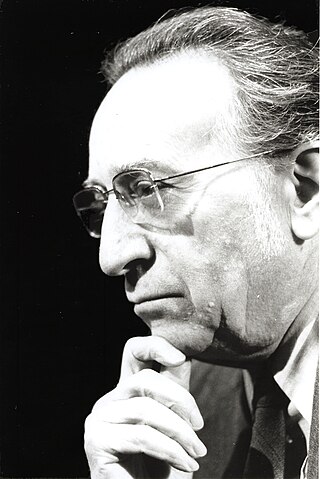
Phonics is a method for teaching people how to read and write an alphabetic language. It is done by demonstrating the relationship between the sounds of the spoken language (phonemes), and the letters or groups of letters (graphemes) or syllables of the written language. In English, this is also known as the alphabetic principle or the alphabetic code.
Total physical response is a language teaching method developed by James Asher, a professor emeritus of psychology at San José State University. It is based on the coordination of language and physical movement. In TPR, instructors give commands to students in the target language with body movements, and students respond with whole-body actions.

English as a second or foreign language is the use of English by speakers with different native languages. Language education for people learning English may be known as English as a second language (ESL), English as a foreign language (EFL), English as an additional language (EAL), English as a New Language (ENL), or English for speakers of other languages (ESOL). The aspect in which ESL is taught is referred to as teaching English as a foreign language (TEFL), teaching English as a second language (TESL) or teaching English to speakers of other languages (TESOL). Technically, TEFL refers to English language teaching in a country where English is not the official language, TESL refers to teaching English to non-native English speakers in a native English-speaking country and TESOL covers both. In practice, however, each of these terms tends to be used more generically across the full field. TEFL is more widely used in the UK and TESL or TESOL in the US.
Crazy English is a brand name related to a non-traditional method learning English in mainland China conceived by Li Yang. Li believes that the traditional way of learning English in China is ineffective. Li Yang's method places heavy emphasis on practicing English orally. His method can be described with the slogan "By shouting out loud, you learn." In many ways it remains similar to the traditional pedagogic practices of Chinese education in that it still relies on repetition and recitation. Members of the school administration in China often disapprove of the method because they believe it goes against the traditional Chinese values of modesty and restraint.

Cuisenaire rods are mathematics learning aids for students that provide an interactive, hands-on way to explore mathematics and learn mathematical concepts, such as the four basic arithmetical operations, working with fractions and finding divisors. In the early 1950s, Caleb Gattegno popularised this set of coloured number rods created by Georges Cuisenaire (1891–1975), a Belgian primary school teacher, who called the rods réglettes.

Caleb Gattegno (1911–1988) was an Egyptian educator, psychologist, and mathematician. He is considered one of the most influential and prolific mathematics educators of the twentieth century. He is best known for introducing new approaches to teaching and learning mathematics, foreign languages and reading. Gattegno also developed pedagogical materials for each of these approaches, and was the author of more than 120 books and hundreds of articles largely on the topics of education and human development.
The grammar–translation method is a method of teaching foreign languages derived from the classical method of teaching Ancient Greek and Latin. In grammar–translation classes, students learn grammatical rules and then apply those rules by translating sentences between the target language and the native language. Advanced students may be required to translate whole texts word-for-word. The method has two main goals: to enable students to read and translate literature written in the source language, and to further students' general intellectual development. It originated from the practice of teaching Latin; in the early 16th century, students learned Latin for communication, but after the language died out it was studied purely as an academic discipline. When teachers started teaching other foreign languages in the 19th century, they used the same translation-based approach as had been used for teaching Latin. The method has been criticized for its shortcomings.
The audio-lingual method or Army Method is a method used in teaching foreign languages. It is based on behaviorist theory, which postulates that certain traits of living things, and in this case humans, could be trained through a system of reinforcement. The correct use of a trait would receive positive feedback while incorrect use of that trait would receive negative feedback.

In mathematics education, a manipulative is an object which is designed so that a learner can perceive some mathematical concept by manipulating it, hence its name. The use of manipulatives provides a way for children to learn concepts through developmentally appropriate hands-on experience.
Language pedagogy is the discipline concerned with the theories and techniques of teaching language. It has been described as a type of teaching wherein the teacher draws from his prior knowledge and actual experience in teaching language. The approach is distinguished from research-based methodologies.
In linguistics, according to J. Richard et al., (2002), an error is the use of a word, speech act or grammatical items in such a way that it seems imperfect and significant of an incomplete learning (184). It is considered by Norrish as a systematic deviation which happens when a learner has not learnt something, and consistently gets it wrong. However, the attempts made to put the error into context have always gone hand in hand with either [language learning and second-language acquisition] processe, Hendrickson (1987:357) mentioned that errors are ‘signals’ that indicate an actual learning process taking place and that the learner has not yet mastered or shown a well-structured [linguistic competence|competence] in the target language.
The natural approach is a method of language teaching developed by Stephen Krashen and Tracy Terrell in the late 1970s and early 1980s. It aims to foster naturalistic language acquisition in a classroom setting, and to this end it emphasises communication, and places decreased importance on conscious grammar study and explicit correction of student errors. Efforts are also made to make the learning environment as stress-free as possible. In the natural approach, language output is not forced, but allowed to emerge spontaneously after students have attended to large amounts of comprehensible language input.
Dictogloss is a language teaching technique that is used to teach grammatical structures, in which students form small groups and summarize a target-language text. First, the teacher prepares a text that contains examples of the grammatical form to be studied. The teacher reads the text to the students at normal speed while they take notes. Students then work in small groups to prepare a summary of their work using the correct grammatical structures, and finally each group presents their work to the rest of the class. Dictogloss activities encourage learners to focus on the form of their language while also being based in communication, and are used in task-based language teaching.
An information gap task is a technique in language teaching where students are missing information necessary to complete a task or solve a problem, and must communicate with their classmates to fill in the gaps. It is often used in communicative language teaching and task-based language learning. Information gap tasks are contrasted with opinion gap tasks, in which all information is shared at the start of the activity, and learners give their own opinions on the information given.

Georges Cuisenaire (1891–1975), also known as Emile-Georges Cuisenaire, was a Belgian teacher who invented Cuisenaire rods, a mathematics teaching aid.
The following outline is provided as an overview of and topical guide to second-language acquisition:
The Articulatory approach to teaching pronunciation considers learning how to pronounce a second language to be a motor skill which most students are not in a position to develop based on self-evaluation of their production. The role of the teacher is therefore to provide feedback on students' performance as part of coaching them in the movements of the vocal tract articulators which create speech sounds.
Eclectic approach is a method of language education that combines various approaches and methodologies to teach language depending on the aims of the lesson and the abilities of the learners. Different teaching methods are borrowed and adapted to suit the requirement of the learners. It breaks the monotony of the class.
Words in Colour is an approach to literacy invented by Dr Caleb Gattegno. Words in Colour first appeared in 1962, published simultaneously in the UK and US. Later versions were published in French and Spanish.

Diane Larsen-Freeman is an American linguist. She is currently a Professor Emerita in Education and in Linguistics at the University of Michigan in Ann Arbor, Michigan. An applied linguist, known for her work in second language acquisition, English as a second or foreign language, language teaching methods, teacher education, and English grammar, she is renowned for her work on the complex/dynamic systems approach to second language development.











